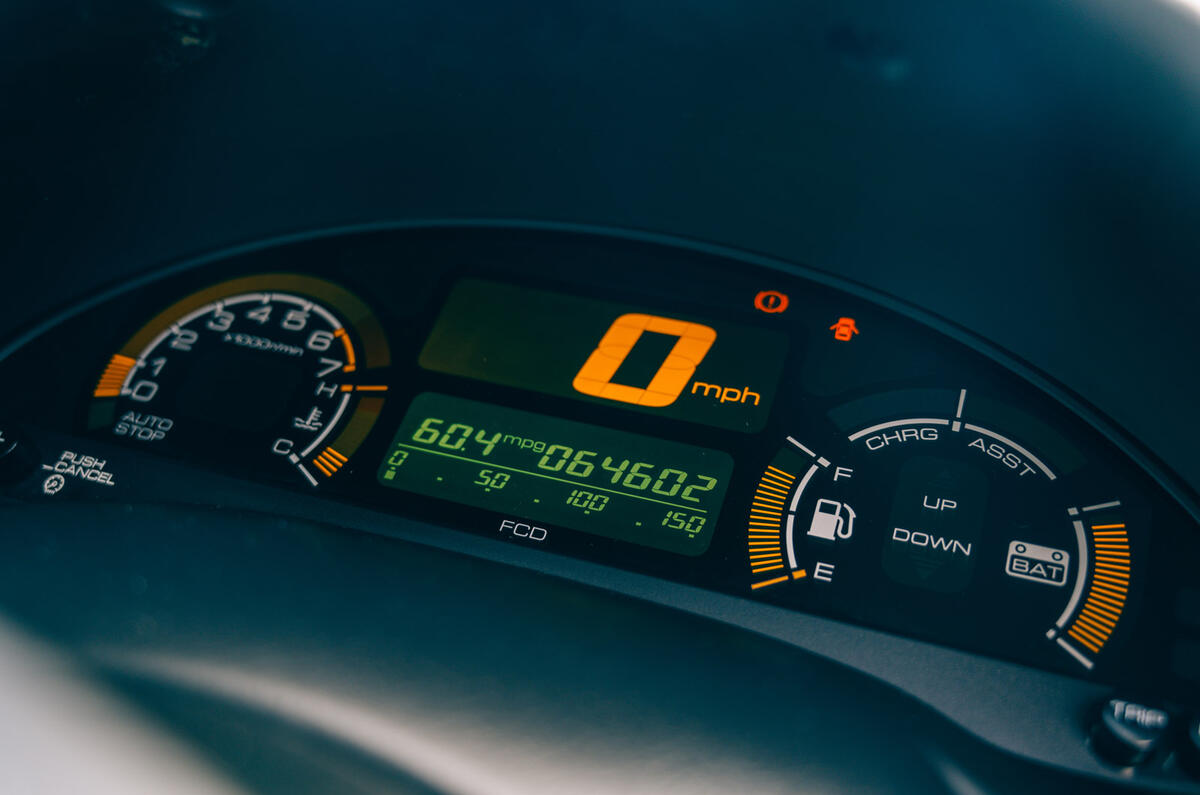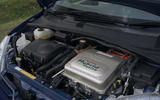When Ferdinand Piëch drove from Wolfsburg to Hamburg one April morning back in 2002, he did only what so many business types in the region still do every day.
The normality of his 140-mile journey was reinforced by the weather (cold, rainy) and his old-school attire (flat cap, checked scarf). He didn’t listen to the radio, because there wasn’t one. With just 8.5bhp at his disposal, neither did he do much overtaking. Bobbing along in the autobahn flow, Piëch simply drove his car for three hours in order to get from company headquarters to an important shareholder event. All quite typical, for a certain sort.
Except, of course, there was nothing typical about this particular journey. Sixty-five years old and soon obliged to retire, as per corporate policy, Piëch was the brilliant but often callous chairman of the supervisory board for Volkswagen. The event was the 42nd annual general meeting of this ambitious company. And between setting off and reaching the five-star Hotel Vier Jahreszeiten, the ‘car’ drip-fed just 2.1 litres of diesel into its toastersized 299cc engine for an average consumption of 317mpg – or less than one litre per 100km.
It was the one-litre barrier that meant everything to Piëch and became an absurdly expensive obsession for Volkswagen over the next decade. How could it achieve such economy in something fully homologated for road use? How, in other words, could it achieve it with something that didn’t rely on a Spitfire seating arrangement, that wasn’t so flimsy that it weighed just 290kg and that didn’t look like somebody had cack-handedly force-fed liquorice into an oversized sausage stuffer?
The answer was the XL1, which even today, nine years after it was unveiled in Qatar, of all places, drops jaws like the top-secret black pudding Piëch burst out of that spring morning. With it, VW had essentially pushed the nuclear button in the war for fuel-efficiency bragging rights. The XL1 was an ecological cousin to the boundary-smashing Bugatti Veyron, which had also been developed on Piëch’s watch, and took on the supercar’s philosophy, only applying it in another way. It cost £98,515 when it went on sale in 2014 and is without question the wildest ‘people’s car’ ever to wear numberplates.

Here’s what it took: a full carbonfibre-reinforced plastic (CFRP) monocoque, magnesiumalloy wheels, carbon-ceramic brake discs, a titanium exhaust, polycarbonate Lamborghini Countach-style windows (with manual winders), CFRP-shell seats by Sparco, unassisted steering, a dual-clutch gearbox (with a bespoke magnesium casing), a flat underfloor and an engine set amidships. Even the delicate anti-roll bars were CFRP.
If the 795kg XL1 had been a supercar, it would have been an unambiguously hardcore one. Tiny, too: the body is narrower than today’s Renault Clio and its highest point sits closer to the road than the airbox of an Ariel Atom. In fairness, the slimline release levers for the gullwing doors really are supercar-spec – borrowed from Lamborghini, which was yet another Piëch conquest, although acquired for Audi, not VW. Lastly, there was a tiny electric motor to help the 800cc two-cylinder turbodiesel along and give the XL1 around 50km of electric driving range. The result? A 313mpg hyper-hybrid.
Around the same time that Piëch could have been mistaken for a farmer who had commandeered extraterrestrial transport, Toyota and Honda were plotting what to do next. Both had been in the economy game for several years, Toyota having invented the mass-market petrolelectric hybrid car as we know it and Honda then demonstrating just what hybrid technology was capable of when paired with innovations in low drag and lightweighting.
Boy, had it been tough. Starting in 1994, at the behest of top-level Toyota executives determined to offer a true “21st-century car’ with twice the frugality of the contemporary Corolla saloon, the Prius project wasn’t simply uncharted in engineering terms but totally blind.
“When it comes to developing ordinary passenger cars, many experienced, senior staff are too eager to offer advice… and stop younger engineers from doing something new,” Takeshi Uchiyamada told Nikkei Asia in 2015. “But with hybrid technology, nobody knew what to do, so they couldn’t interfere. There was a lot of pressure, but that helped raise our morale.”

What they devised was a system that used two electric motors: one to bolster engine output and act as a generator during braking, another to convert engine drive in electrical energy, govern the CVT and function as a starter motor, all marshalled by planetary gears in a power splitter, with engine speed controlled via the CVT. Considering the demonic level of complexity involved, the cheerful, almost child-like ‘Hybrid System’ graphic on the engine cover could reasonably be construed as expert-level trolling by the marketing team.
The scale of the task was hard to comprehend. Chief engineer Uchiyamada explained in the same interview that when work started, even the nickel-hydride battery cells could offer only half the required power output and had a defect rate “100 times [the] acceptable level”. And then, in 1995, perhaps unaware of the toll this project was taking on its staff, Toyota’s board moved the Prius launch date forward one year, to 1997 – a sick joke, because at this point, all that the engineers had to offer was a solitary prototype that had refused to move for 49 days. On day 50, the wind changed and the thing travelled 500 metres (then gave up), but the ‘Just in time for the 21st century’ tagline wasn’t mere advertising fluff. It was the sweat-drenched truth.
And the little Honda? It splits the difference between the XL1 and the Toyota Prius, if not in price (these cars can be bought cheaply today) then in concept. Sweet, isn’t it? And were it not for the presence of the XL1, this car would be the one reeling in eyeballs, not least because dwelling on the artless lines of the Prius for too long isn’t actually very good for you. On the Insight, you will find those headline-making rear spats, the 14in aluminium-alloy flying-saucer wheels, an elegant glass tailgate that forms an integral part of the Kamm tail and the pursed-lips grille, all of which contribute to the low drag coefficient of 0.25, versus an ultra-low 0.18 figure for the XL1.For reference, Mercedes’ new electric flagship, the mammoth EQS, now holds the production car record, with an effort of 0.19, although it’s far easier to get good aero on larger cars.
Dwell on the efficiency-or-bust two-seater for a moment longer and you will begin to appreciate the scope of the glasshouse, which gives the interior an airy atmosphere more soothing than that of the XL1. And also, because of the tapered rear bodywork, what could be categorised as box arches.

Then there’s what you don’t see. It may be an econo-special, but the aluminium-bodied Insight is endowed with a 6000rpm VTEC engine, albeit one of just 995cc and three cylinders. The hybrid bit is the Integrated Control Assist (IMA), which takes the form of a 6cm-thick electric motor that slots between the engine and the bespoke five-speed gearbox, essentially forming the flywheel. Unlike the Prius and XL1, the Honda can’t move under the 25lb ft of its electric motor alone. The motor only assists, working most effectively in the lower portion of the rev range, where it acts like an incredibly fast-spooling and very small turbocharger.
The motor is not the only advanced part of this powertrain. The engine’s intake manifold and valve cover are made of plastic resin and the oil pan uses lightweight magnesium, which has the additional benefit of stiffening the block. An unusually strong air-fuel swirl created in the combustion chambers also allows this engine to run leaner than Mo Farah in gold-medal form and helped the Insight to an official 83.1mpg – at a time when Ford’s less potent 1.3-litre Fiesta managed half that.
Top speed was pegged at 112mph, but the car was theoretically geared for 176mph, which along with the 835kg kerb weight (1100kg for the Fiesta) and slippery aero explains why, in the right conditions, owners can claw more than 650 miles from the 40-litre fuel tank. Or London to Berlin non-stop. Piëch would have been delighted at that, especially as the Insight had an entirely hospitable cabin, with all the mod-cons that you would have expected in 1999.
Seeing all three cars together makes you contemplate just how much R&D spend it’s possible to cram into one New Forest car park. As our Matt Prior puts it, these cars were the future once, and that isn’t exactly an inexpensive genre with a guaranteed return on investment.
It’s at this point we would usually ask the question: ‘Which one of these machines makes most sense?’ But the answer is obvious. The legacy of the idealistic Prius may today be tainted by the manner in which 99% of people today experience the car (summoned with ambivalence via smartphone, exhibiting questionable cabin aroma and with the crusty ride quality that speaks of shot dampers), but Toyota has sold more than six million examples across four generations and more than 70 million hybrids in total. When the Europeans were plugging diesel, Toyota went hybrid – and woah how that paid off.

By comparison, the Insight found 16,000 buyers before its successor caved in to commercial pressures and copied the four-door Prius template.
As for the XL1, it was only ever an engineering vanity project that, postDieselgate, whiffs ever so slightly of greenwashing. Only 250 were made, and VW kept 20% of those for itself. All said and done, the Insight and XL1 are footnotes in automotive history, while the Prius wrote its own chapter.
Besides, an early Prius isn’t the complete charm vacuum its exterior suggests. The 1.5-litre Atkinson-cycle engine in this 80,000-miler is loud and hoarse, especially when held at 4000rpm during acceleration, which happens in order to maximise efficiency while the CVT is left to adapt and increase road speed. The vast steering wheel (helm, really) is also unresponsive for too long after you decide its services are required, and the ride quality is, I’m afraid to say, very much Uber-spec.
But the thickly padded velour chairs, which feel perched compared with those in the Insight and positively aerial after the buckets in the XL1, are superbly comfy. The Gameboy-like readout is delightful, the visibility panoramic and the whole thing generally infused with an easiness that appeals. Toyota was keenly aware of Japan’s ageing population when the Prius project was born, and that comes through in the driving experience. This car makes an art form of pottering.
More enduringly, when you consider that those innovative Toyota engineers were, by their own admission, still ironing out kinks in their Gordian driveline right up to the moment it went into production, the operation is slick. Amazingly slick, actually. The gear selector looks and feels like a railroad-switch lever, but yank the Prius into drive and it casts off under electric power and thereafter balances its energy sources with decent finesse.

One of the motors will also recoup energy while coasting, but there’s no regenerative effect triggered by pushing the brake pedal like on modern hybrids. It means that pedal works uncorrupted and actually feels fantastic: precise and performance-car firm. Surprising.
If that’s the only morsel of Prius that can be considered even vaguely sporting, the XL1 is quite different. In fact, it’s so inherently sports car ‘optimised’ that VW built a prototype with wider tracks, tyres that weren’t 115-section low-friction specials and the 187bhp V-Twin from a Ducati Panigale. That would have been good fun. As it is, the diesel-hybrid XL1, all 69bhp of it, is still in many ways deeply satisfying to drive.
The ride is robust but the damping fluent at speed, and the combination of double wishbones at the front and that natural steering makes the car an excellent communicator. It isn’t fast and, even with 25bhp of electric power to call on, throttle response is imprecise, but there’s something of the Lotus Elise about the way it moves. In contrast to the effortless way in which it goes down a road, the driver gets a bit of a workout.
The theoretical 313mpg economy potential comes at a price, though. The rigidity of the XL1’s monocoque and lack of soundproofing (the interior, with its wood-pulp dash, weighs just 80kg) means there’s copious road roar, even if the car slips through the air itself almost silently. The two-pot diesel – essentially an aluminium 1.6-litre TDI from the Polo halved – doesn’t transmit much vibration but has all the acoustic refinement of a marine two-stroker.
The wow factor of the rear-view cameras and their beer-mat displays also fades, leaving you with a car that has worse rearward visibility than the Lamborghini Aventador SVJ. The almost weightless gullwing doors are excellent theatre, but opening them up, vaulting the beautiful but broad carbonfibre sills and gently lowering yourself into the cramped cockpit becomes tiring. The need to carry around the suitcase-sized charger inverter robs the XL1 of what would otherwise be Porsche 911-beating boot space. Special? Hugely, but not exactly usable.
The Insight is more ordinary than the XL1. Perhaps unjustly, there’s just less pioneering spirit about the place, and this starts with the footprint. The Honda’s is neatly tapered to achieve an aerodynamic teardrop shape, but it’s subtle. On the XL1, the effect is so extreme that for a brief moment when Prior drives it over a crest behind me, I can see in the rearview mirror of the Insight clear daylight between the front and rear wheels on either side of the VW. It’s quite shocking.

But if the Insight’s packaging is the more ordinary, the driving position is similarly hunkered down, and not unlike that of the S2000 built alongside it (and the NSX) in Tochigi.
On the move, the Honda is almost as easy-going as the Toyota but possesses much of the dialled-in nature of the XL1: sensitive steering, audible suspension clinks, plenty of handling balance, plus the appeal of three pedals and a snickety gearshift. Throttle response is also on par with that of a modern Mazda MX-5 and therefore completely wipes the floor with the others. Good old Honda. Dodgy ride quality, mind.
Is the Insight therefore the sweet spot here? Clever with the physics but not so clever that it’s outright unapproachable. Sophisticated but not to the extent that it prices out 95% of customers. Spectacularly economical but with enough duality in its engineering to be surprisingly good to drive when the mood takes you. Lightweight but done realistically. Is it, in short, the template that manufacturers should be returning to today, rather than opting for 1500kg electric superminis? I think so, but as an owner, maybe I would say that.
In any case, the idea wouldn’t fly. Safety requirements would lay waste to the flyweight chassis and using anything more exotic than aluminium leads you into XL1 territory. In the era of crossover mania, a slippery two-seater bodyshell would also be less saleable than it was two decades ago, when Toyota proved that even if you create something genuinely mould-breaking, you still need to package it very conservatively.
And looking forward? What’s intriguing is that history could be in the process of gently repeating itself. Where VW was once obsessed with diesel, today it’s betting the farm on electric cars, led by group CEO Herbert Diess, the self-styled Elon Musk of Wolfsburg. Same ethos, different medium. Honda continues to experiment, occasionally delivering clean-sheet wonders such as thHonda E refreshing E electric city car, although in general innovates with little of the conviction it had around the time of the millennium. Don’t expect it to change the face of the industry.
As for Toyota, it remains lukewarm on electric cars, mostly selling hybrids made to the same recipe set out by the original Prius. However, for some time, and somewhat against the grain, it has also taken hydrogen very seriously, chipping away at the technology to the extent that if society reaches any form of pivot point, it will be ready. The Mirai, it’s called – an outwardly ordinary but inwardly extraordinary saloon. Sound familiar?
READ MORE
Hybrid mega-test part two: Does diesel do it better?
Mud plug-in: Land Rover Discovery Sport meets PHEV SUV rivals































Join the debate
Add your comment
Only in the same way flying cars will be the future. Hydrogen cars will always be one for the future and not only because they are way to inefficient.